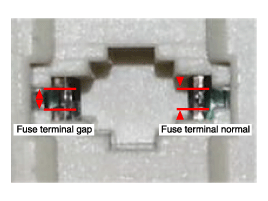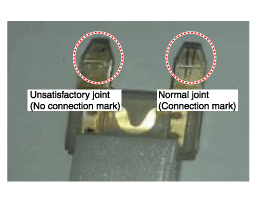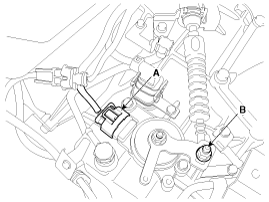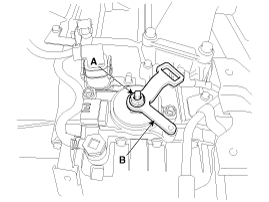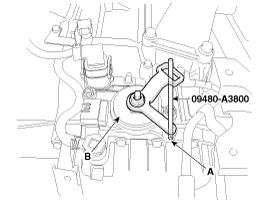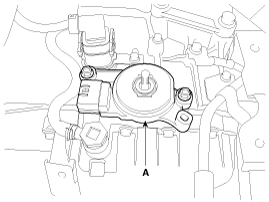Hyundai Tucson: Automatic Transaxle Control System / Inhibitor Switch Repair procedures
Hyundai Tucson (LM) 2010-2015 Service Manual / Automatic Transaxle System / Automatic Transaxle Control System / Inhibitor Switch Repair procedures
| Inspection |
|
Inspection flow
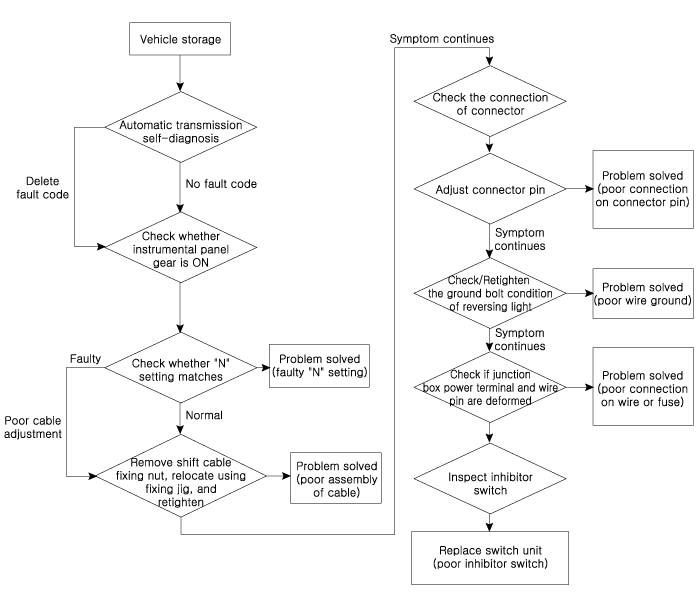
Items to check
| 1. |
Inspect DTC code. |
| 2. |
Inspect whether N setting matches.
|
| 3. |
Inspect shift cable separation.
|
| 4. |
Inspect whether connector is connected.
|
| 5. |
Inspect ground condition on reversing light circuit.
|
| 6. |
Inspect wiring connection on junction box power terminal and fuse lamp.
|
| 7. |
Inspect inhibitor switch signal.
|
| Removal |
| 1. |
Set shift lever to "N" position. |
| 2. |
Remove the air duct.
(Refer to Engine Mechanical System - "Air cleaner") |
| 3. |
Remove the battery and the battery tray.
(Refer to Engine Electrical System - "Battery") |
| 4. |
Disconnect the inhibitor switch connector (A). |
| 5. |
Remove the shift cable mounting nut (B).
|
| 6. |
Remove the manual control lever (B) and the washer after removing a nut (A).
|
| 7. |
Remove the inhibitor assembly (A) after removing the bolts (2ea).
|
| Installation |
| 1. |
Install in the reverse order of removal. |
 Inhibitor Switch Troubleshooting
Inhibitor Switch Troubleshooting
Fault Diagnosis
Fault Diagnosis for Symptom
Major Symptom Expected Cause Items to Check and Measures Shift lever not operating Gear not marked on cluster Shock occurs wh ...
 Shift Lever Components and Components Location
Shift Lever Components and Components Location
Components
1. Shift lever knob 2. Shift lever assembly3. Shift cable4. Manual control lever5. Shift cable retainer
...
Other information:
Hyundai Tucson (LM) 2010-2015 Owners Manual: XM Radio
Using XM satellite™ Radio
Your vehicle is equipped with a 3 month complimentary period of XM Satellite™
Radio. XM provides access to over 130 channels of music, information, and entertainment
programming.
Seek
Press the
key
Shortly pressing the key: select previous or next c ...
Hyundai Tucson (LM) 2010-2015 Service Manual: Overdrive Clutch Control Solenoid Valve(OD/C_VFS) Specifications
Specifications
Direct control VFS[OD/C]
x Control type : Normal high type
Control Pressure kpa (kgf/cmx, psi) 500.14 ~ 9.81(5.1 ~ 0.1, 72.54 ~ 1.42)Current value(mA)50 ~ 850 Internal resistance(x)5.1
...
© 2010-2024 www.htmanual.net


